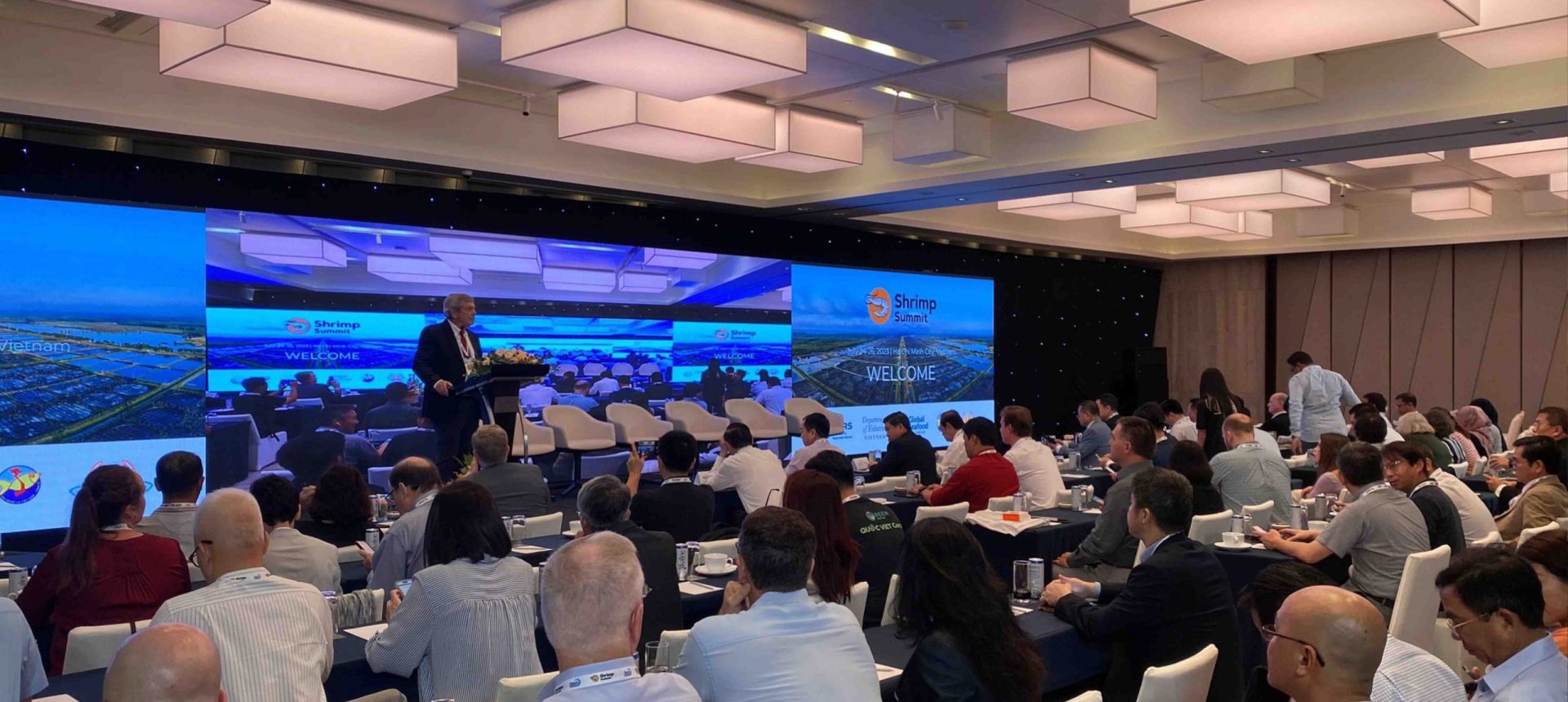
With the Asian and global shrimp industry bogged down by several concerns like stagnant production, unstable livelihoods of growers, domestic price surges hindering export and processing activities, disease outbreaks and environmental issues that have destabilized the shrimp farming market, the 2023 Shrimp Summit – organized by The Center for Responsible Seafood (TCRS – a non-profit organization centred on research, education, and collaboration to support responsible and regenerative seafood production), emerged as a pivotal industry event.
Industry leaders of the Global Shrimp Market gathered in Ho Chi Minh City, Vietnam, July 24-26, 2023 to improve the shrimp farming sector globally by focusing on production efficiency, growers’ livelihoods, market demand, sustainability, and climate change and developing practical, consensus solutions to existing challenges. All sessions were led by expert speakers and panellists from around the globe, with the first day of sessions covering Global Production & Markets, Disease Management, Shrimp Breeding, and Grow-out Intensification.

The Global Production and Markets topics covered production data from major producing countries, output forecasts for 2023 and 2024, and demand from major markets such as the United States, the European Union, China, and Japan. Issues such as unified marketing, product quality standards, and increased sustainability demands were also highlighted.
The eminent speakers included:
The disease management workshop examined the major and developing shrimp illnesses in Asia and the Americas. Their detection and control methods were also examined, as were ideas for better rationalising broodstock imports to decrease smuggling and disease spread. The most recent study on using viral accommodation to confer tolerance to viral illnesses was also presented.
The stellar line-up of speakers included:
Breeding is a key difference between Asian and Ecuadorian shrimp farming. In a shrimp breeding session, experts from renowned breeding schemes in Ecuador and Asia will debate the benefits and drawbacks of each. The seminar will explore the expanding importance of genetic markers and genomic selection, as well as the inherent flaws in programmes for sentinel testing and intellectual property protection.
The speakers included:
The first day of summit proceedings concluded with a debate on grow-out intensification, which is taking place in Asia and the Americas. In general, intensification increases the efficiency of land, water, and energy consumption. However, each production system has inherent carrying capacity constraints due to reasons such as inadequate predator management, insufficient feed in extensive systems, limited dissolved oxygen in semi-intensive systems, and sediment and water quality deterioration in intensive systems. When carrying capacity is exceeded, prawns experience stress, sickness, and mortality. Thus, the problem is to intensify without surpassing carrying capacity.
The speakers included:
Although the summit included a virtual component, participants also had the chance to take part in tours that demonstrated the high-tech, super-intensive farming techniques used by Minh Phu, the top shrimp farming company in Vietnam, and extensive shrimp aquaculture techniques in mangroves and rice paddies in Ca Mau province.
One of the biggest integrated shrimp businesses in Vietnam, Minh Phu Seafood Corporation, gave visitors a tour of their ultra-intensive tank farm on July 24 and demonstrated cutting-edge AI-driven technologies, such as smartphone systems for shrimp counting, water quality monitoring, and farm management. Using a model based on research, Minh Phu’s ultra-intensive vannamei tank farm cultivated prawns all year long. Following the EMS pandemic in 2013–14, Minh Phu changed the way they raised prawns, which led to over 90% survival rates, rapid growth, and no need for antibiotics. Attendees got a behind-the-scenes glimpse at the incredibly effective operations of Vietnam’s largest prawn farm.
After the Summit, a tour of the Ca Mau area highlighted the organic black tiger shrimp that were produced in conjunction with mangroves and rice terraces at low densities. Farmers stock postlarvae and wait for high harvest sizes in these unfed systems while Mother Nature raises the prawns. After that, in-water nets are harvested to provide a distinctive good that is in high demand on the global market. On this tour, visitors also went to the Viet Uc hatchery, a processing facility, and a Vietnam Foods facility that turns prawn processing leftovers into other commercially viable goods.

